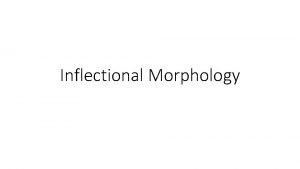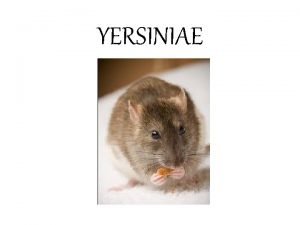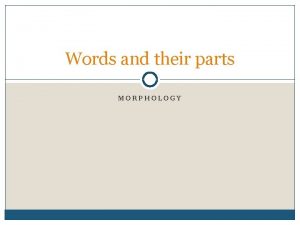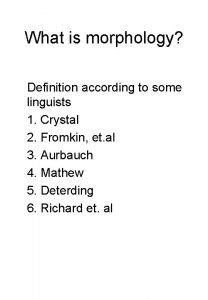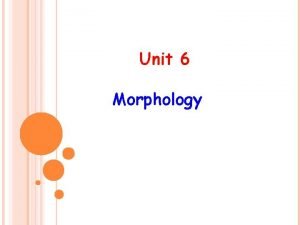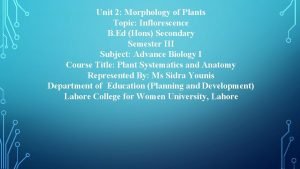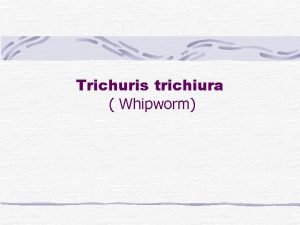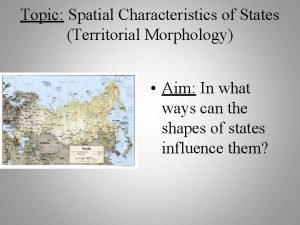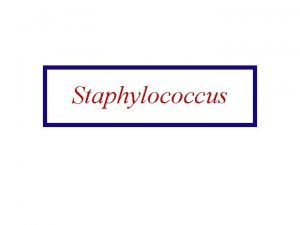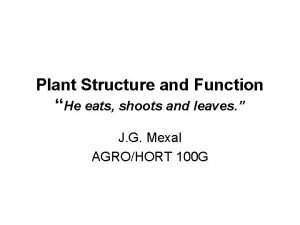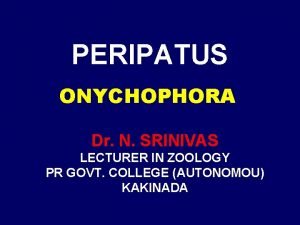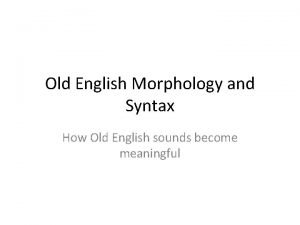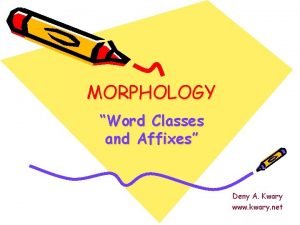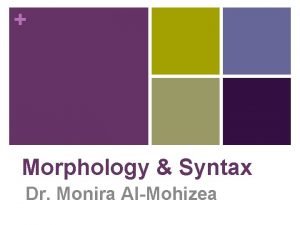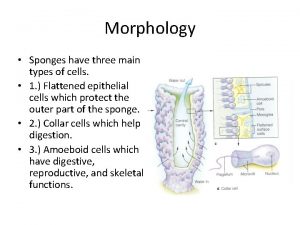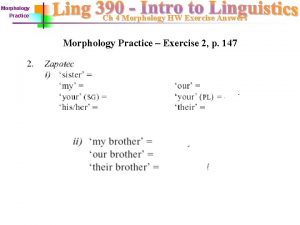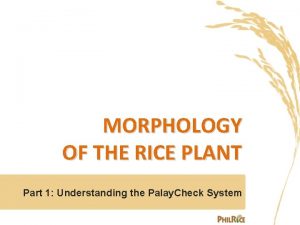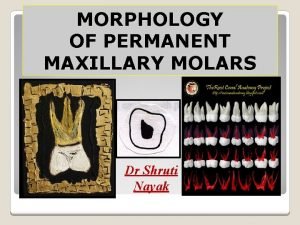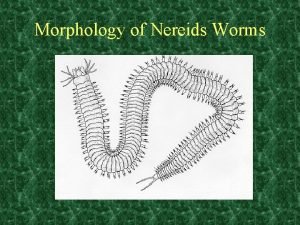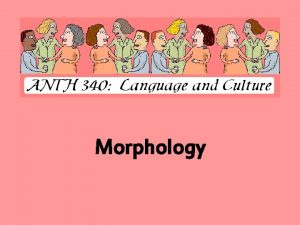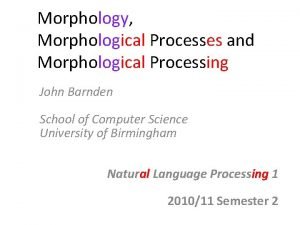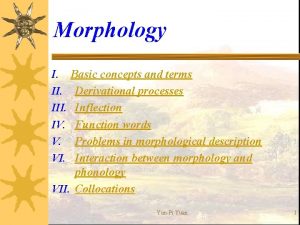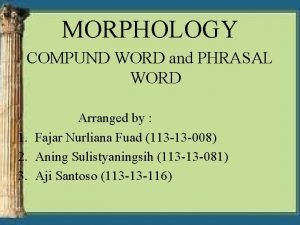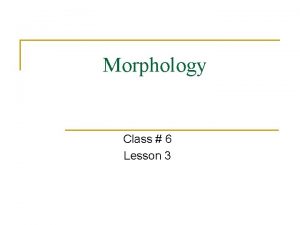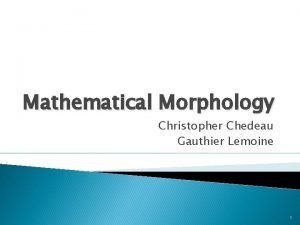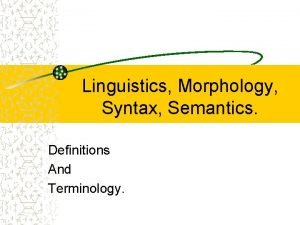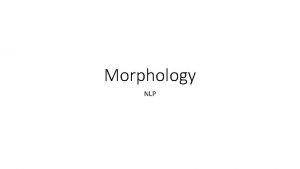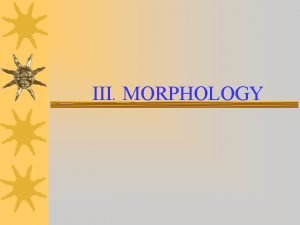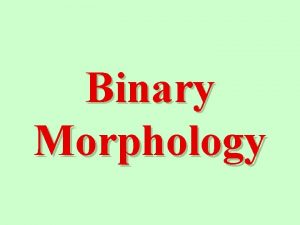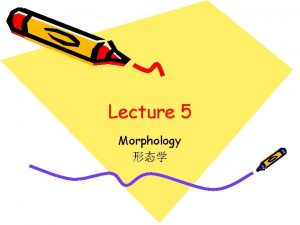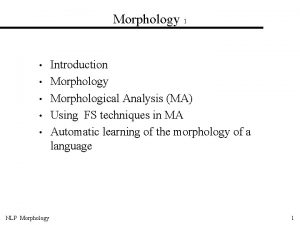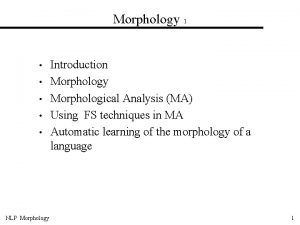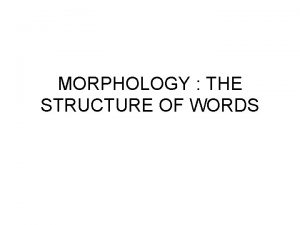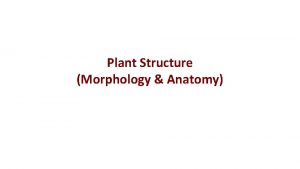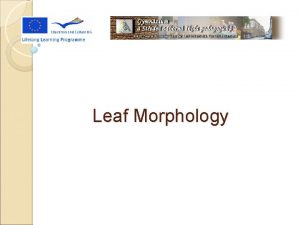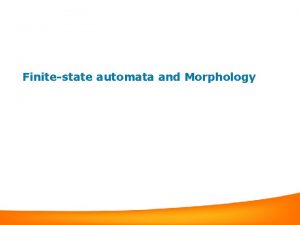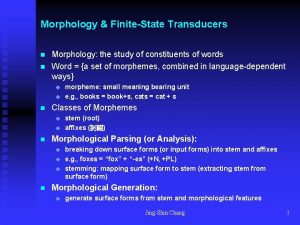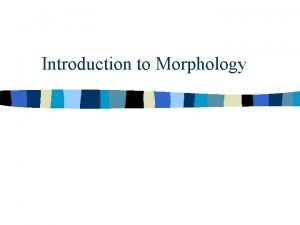General Anatomy What is Anatomy Anatomy morphology is








































- Slides: 40

General Anatomy

What is Anatomy? ØAnatomy (= morphology): is a branch of biological science which deals with the form and structure of organism. 12/23/2021 1: 27 AM

ØMacroscopic Anatomy(Gross anatomy): It is the study of form and structure of the body by naked eye using simple instruments e. g. Scalpels & forcepses 12/23/2021 1: 27 AM

ØMicroscopic anatomy (Histology): is the study of different tissues and cells. using microscope (light & electron). 12/23/2021 1: 27 AM

ØDevelopmental anatomy: is the study of the changes which organisms undergo from the time of conception through birth, maturity till death. ØEmbryology: developmental changes occurring prior to birth (prenatal development). 12/23/2021 1: 27 AM

ØComparative Anatomy: comparison of the structures of animals (similarities and differences). 12/23/2021 1: 27 AM

ØSpecial anatomy: study of the structure of single species. e. g. horse anatomy, camel anatomy 12/23/2021 1: 27 AM

Methods of studying anatomy 12/23/2021 1: 27 AM

ØSystematic anatomy: Osteolgy: The description of the skeleton (bone and cartilage). Syndesmology (Arthrology): The description of the jonits. Myology: The description of the muscles. Splanchnology: The description of the viscera. Angiology: The description of the blood circulation. Dermatology: The description of the skin and its structures. Neurology: The description of the nervous system. 12/23/2021 1: 27 AM

ØTopographic anatomy: The study of organ and system in the relation to their surrounding parts. 12/23/2021 1: 27 AM

ØApplied anatomy: The consideration of anatomical facts in their relation to the clinical aspects 12/23/2021 1: 27 AM

Topographic terms 12/23/2021 1: 27 AM

ØDorsal: Structures lie toward the back (dorsum). e. g. the kidneys are dorsal to the intestine. Ø Ventral: Structures lie toward the belly (ventrum). e. g. the intestine is ventral to the kidneys. 12/23/2021 1: 27 AM

ØCranial: Structures lie toward the head (cranium). e. g. the thorax is cranial to the abdomen. N. B. within the head, structures toward the muzzle are said to be rostral (rostrum) Ø Caudal: Structures lie toward the tail. e. g. the abdomen is caudal to thorax. 12/23/2021 1: 27 AM

ØMedial (internal): Structures lie toward median plane. e. g. the heart is medial to the lung. Ø Lateral (external): Structures lie away from median plane. e. g. the ribs are lateral to the lungs. 12/23/2021 1: 27 AM

ØSuperficial: Towards the surface. Ø Deep: Away from the surface. 12/23/2021 1: 27 AM

ØIn the limbs: Proximal: structures near the body. Distal: structures further away from the body. N. B. Below the carpal joint: Cranial Dorsal Caudal Palmar N. B. Below the tarsal joint: Cranial Dorsal Caudal plantar 12/23/2021 1: 27 AM

12/23/2021 1: 27 AM

Planes of the body 12/23/2021 1: 27 AM

Median plane: any longitudinal plane dividing the body into similar halves (right & left). Sagittal plane: any plane parallel to the median plane. Transverse plane: passing through the body at right angles to the median plane; divides the body into cranial and caudal part. Frontal plane: it is at right angles to median and transverse plane. It divides the body into dorsal and ventral parts. 12/23/2021 1: 27 AM

12/23/2021 1: 27 AM

General osteology 12/23/2021 1: 27 AM

Osteology: The study of the bone which form the skeleton. 12/23/2021 1: 27 AM

Function of the bones: Give rigidity and form of the body. Act as levers with which the attaching muscles in it, so it help in locomotion. protection of vital organs e. g. brain, heart. Site of hematopoiesis (blood cell production). Storage of minerals e. g. calcium and phosphorus. 12/23/2021 1: 28 AM

Classification of the skeleton Ø Axial skeleton: Skull, vertebral column, ribs and sternum. Ø Appendicular skeleton: Bones of limbs. Ø Splanchnic (visceral) skeleton: Certain bones that developed in some viscera or soft organs e. g. os cordis of ox, os penis of dog 12/23/2021 1: 28 AM

Ø Exoskeleton: Protecting structures are situated externally e. g. feather, hair, scales of the fishes, shield of turtles. Ø Endoskeleton: It is embedded in the soft tissues. 12/23/2021 1: 28 AM

Types of bones 12/23/2021 1: 28 AM

ØLong bones Body (diaphysis): elongated cylindrical in form with two extremities (epiphysis). Body is tubular and encloses the medullary cavity which contains bone marrow. Act as levers, support, locomotion. e. g. femur 12/23/2021 1: 28 AM

ØShort bones They present somewhat similar dimentions in length, breadth, thickness. There is no marrow cavity. Absorption of concussions. e. g. carpal bones. 12/23/2021 1: 28 AM

ØFlat bones Consist of two plates of compact bone separated by spongy bone and marrow. Have two surfaces. protection of the vital organs, large areas for attachment of the muscles e. g. scapula, skull. 12/23/2021 1: 28 AM

ØIrregular bones irregular shape Protection, support, muscular attachment. e. g. vertebrae. 12/23/2021 1: 28 AM

ØPneumatic bones Contain air spaces or sinuses. e. g. frontal bone , some long bones in birds. 12/23/2021 1: 28 AM

ØMarrow: It occupies the marrow spaces of spongy bone and medullary cavity of the long bone Red marrow: blood forming place. e. g in sternum (the best place for aspiration and examination of marrow. • Yellow marrow: fat tissue. degeneration of the cells and fatty infiltration. 12/23/2021 1: 28 AM

Descriptive terms Projections articular • Head • Condyle • Trochlea • facet Non articular • process • Tuberosit • Tubercle • Crest • Spine • Neck • line Depressions articular • Glenoid cavity • Cotyloid cavity • notch Non articular • fossa • fovea • Foramen • canal 12/23/2021 1: 28 AM

ØProjections: • Articular projections: v. Head: spherical articular projection e. g. head of humerus. vcondyle: more or less cylindical articular projection e. g. Condyles on distal end of humerus. 12/23/2021 1: 28 AM

vtrochlea: pully like articular projection e. g. trochlea of the femur. vfacet: relatively flat articular surface e. g. distal end of radius. • Non articular projections: vprocess: general term for a bony projection e. g. mastoid process in the skull. 12/23/2021 1: 28 AM

v. Tuberosity: larger non articular projection e. g. teres major tuberosity of humerus. v. Tubercle: smaller non articular projection e. g. psoas tubercle of ilium. v. Crest: terms for sharp ridge e. g. trochanteric crest of femur. vspine: pointed projection e. g. spine of scapula. 12/23/2021 1: 28 AM

v. Neck: connects the body with head e. g. neck of humerus. v. Line: small mark on the bone e. g. popliteal line on the tibia. 12/23/2021 1: 28 AM

ØDepressions: Articular depressions: v. Glenoid cavity: shallow articular cavity e. g. Glenoid cavity of the scapula. v. Cotyloid cavity: deep articular cavity e. g. acetabulum. v. Notch: articular e. g. semilunar notch of ulna. non articular e. g. ischiatic notch of pelvic bone. 12/23/2021 1: 28 AM

Non articular depressions: v. Fossa: large non articular depression e. g. subscapular fossa. v. Fovea: small non articular depression e. g. fovea capitis v. Foramen: circumscribed hole e. g. nutrient foramen. v. Canal: tunnel through one or more bones e. g. infraorbital canal. 12/23/2021 1: 28 AM
 What is inflectional and derivational morphology
What is inflectional and derivational morphology Diferencia entre gran plano general y plano general
Diferencia entre gran plano general y plano general Where did general lee surrender to general grant?
Where did general lee surrender to general grant? Chapter 6 dental assisting
Chapter 6 dental assisting Chapter 6 general anatomy and physiology
Chapter 6 general anatomy and physiology Yersinia pestis morphology
Yersinia pestis morphology Back-formation words
Back-formation words Words and their parts
Words and their parts Morphology definition linguistics examples
Morphology definition linguistics examples Lexical morphemes examples
Lexical morphemes examples Morphology of inflorescence
Morphology of inflorescence Trichuris trichiura morphology
Trichuris trichiura morphology Territorial morphology definition
Territorial morphology definition Morphology in forensics
Morphology in forensics Territorial morphology example
Territorial morphology example Staph aureus morphology
Staph aureus morphology Function of plumule and radicle
Function of plumule and radicle Dr. n srinivas
Dr. n srinivas Cryptococcus neoformans india ink morphology
Cryptococcus neoformans india ink morphology Old english morphology
Old english morphology Affixes examples
Affixes examples Morphology deals with
Morphology deals with Syntax
Syntax Morphology of sponges
Morphology of sponges Importance of morphology
Importance of morphology Morphology exercises with answers
Morphology exercises with answers Morphology of rice
Morphology of rice Stuart groove maxillary molar
Stuart groove maxillary molar Morphology of annelida
Morphology of annelida Polysynthetic language
Polysynthetic language Types of morphology in linguistics
Types of morphology in linguistics Function words are
Function words are Absogoddamlutely
Absogoddamlutely Morphology meaning in marathi
Morphology meaning in marathi Compund word
Compund word Tree diagram morphology
Tree diagram morphology Coinage in morphology
Coinage in morphology Morphological forms of inflammation
Morphological forms of inflammation Enumerate the rice plant growth and development stages
Enumerate the rice plant growth and development stages Imagemagick morphology
Imagemagick morphology Morphology definition linguistics examples
Morphology definition linguistics examples
